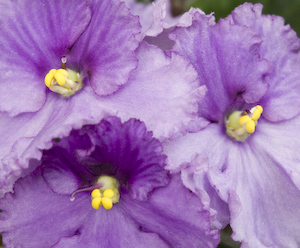Improving Composition through Cropping and Rotating
Despite my attempts to compose well in the camera, I often find the in-camera composition less than completely satisfying. Sometimes, I find some distraction in the background that I had not noticed when capturing the image. Other times, I discover something along the edge of the frame that I didn’t see through the lens. Still other times, I’m not happy with the ratio of length to width of the frame that the camera gave me. Cropping, by itself, is a very useful technique for addressing these problems and, many times, cropping is sufficient. When cropping is not enough, we have another technique that is often overlooked: rotation.
In the above pair of images, the original (from the camera) is on the left, with the final on the right. There is a distraction (a sliver of a blossom) on the right edge — I just didn’t see it in the camera. This one is easily removed by cropping alone. In the upper-left corner, I have a partial blossom that steals attention away from the cluster of three blossoms in the middle of the frame. If I were to rely on cropping alone to get rid of that, I would be cutting away more than I want from one of the “keeper” blossoms, and I would be left with more of the background than I like — the image just wouldn’t be very balanced. A small counter-clockwise rotation makes all the difference here, giving me the ability to cut what I don’t want and keep what I do want.
One possible reason for rotation being overlooked is that it is often a modal action — one which must be done by itself, independent of cropping and positioning. When working in the darkroom, I have the ability to position and rotate the paper-holding easel simultaneously, which is convenient enough that I do it regularly without even thinking about it. With today’s computers and software, we typically have only a single point of input through a mouse or pen, mapped to either position or cropping or scale (size) or rotation, but only one at a time. If we had even just two mice usable simultaneously, we could accomplish a position, crop, and rotation all in the same action. For many years I have seen presentations of many research projects demonstrating the feasibility of multiple input devices. Someday we may see this in the photo manipulation tools we have commercially available. Until then, rotation is going to be an independent action.
So, even though rotation isn’t as convenient as we would like, it is worth finding and using. Rotation gives us a valuable degree of freedom, enabling us to use cropping more effectively to strengthen the composition of our images.

Tip of the Week
2007.11.26


